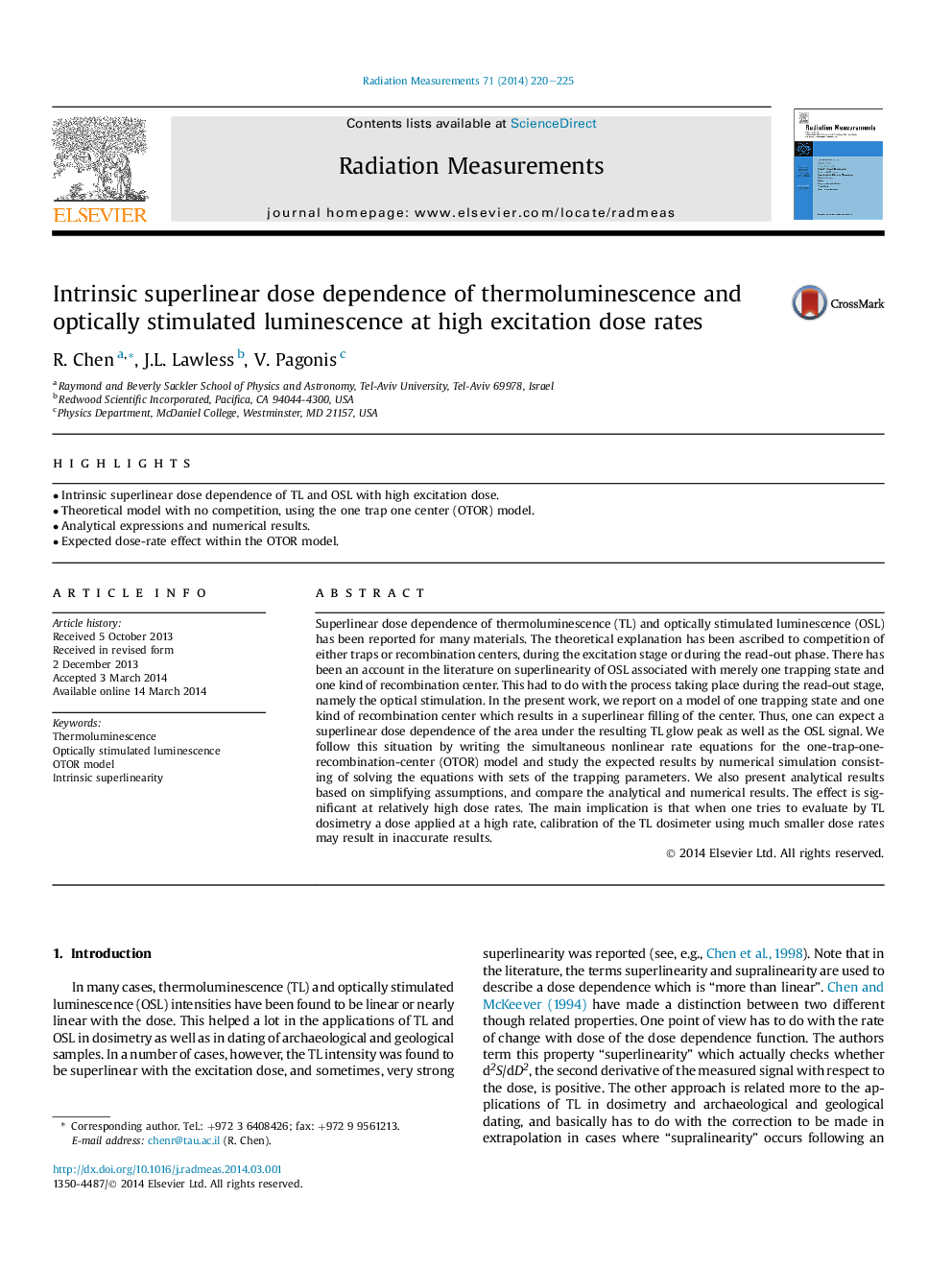| Article ID | Journal | Published Year | Pages | File Type |
|---|---|---|---|---|
| 1880586 | Radiation Measurements | 2014 | 6 Pages |
•Intrinsic superlinear dose dependence of TL and OSL with high excitation dose.•Theoretical model with no competition, using the one trap one center (OTOR) model.•Analytical expressions and numerical results.•Expected dose-rate effect within the OTOR model.
Superlinear dose dependence of thermoluminescence (TL) and optically stimulated luminescence (OSL) has been reported for many materials. The theoretical explanation has been ascribed to competition of either traps or recombination centers, during the excitation stage or during the read-out phase. There has been an account in the literature on superlinearity of OSL associated with merely one trapping state and one kind of recombination center. This had to do with the process taking place during the read-out stage, namely the optical stimulation. In the present work, we report on a model of one trapping state and one kind of recombination center which results in a superlinear filling of the center. Thus, one can expect a superlinear dose dependence of the area under the resulting TL glow peak as well as the OSL signal. We follow this situation by writing the simultaneous nonlinear rate equations for the one-trap-one-recombination-center (OTOR) model and study the expected results by numerical simulation consisting of solving the equations with sets of the trapping parameters. We also present analytical results based on simplifying assumptions, and compare the analytical and numerical results. The effect is significant at relatively high dose rates. The main implication is that when one tries to evaluate by TL dosimetry a dose applied at a high rate, calibration of the TL dosimeter using much smaller dose rates may result in inaccurate results.
